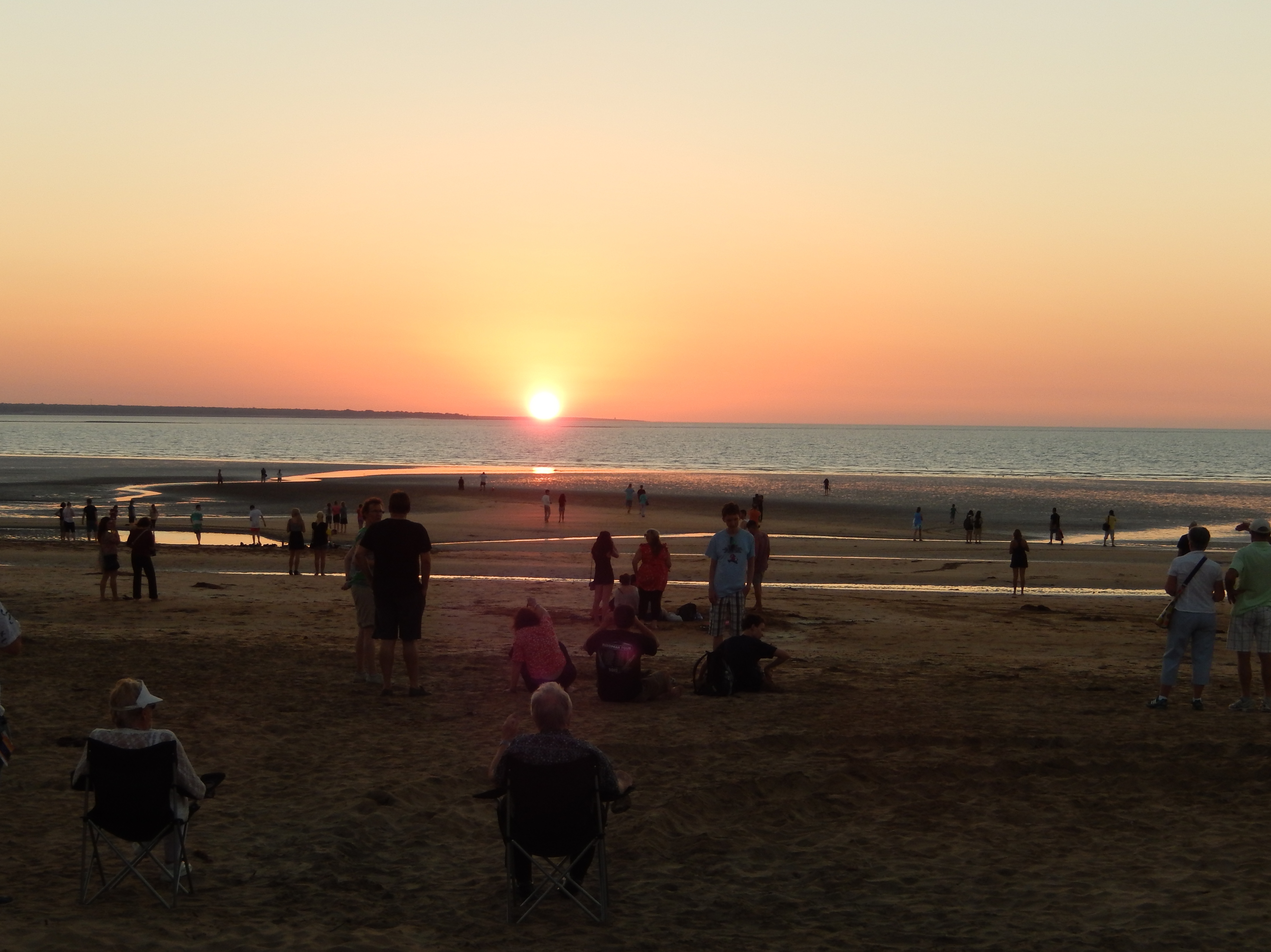Doing Darwin
Julie and I had not been to Darwin for 37 and 20 years respectively. So maybe it’s changed a bit, right? The city was named after Charles Darwin, was a key point in the settlement of the north, bombed 53 times by the Japanese, almost wiped out by Cyclone Tracey and now a prosperous middle-sized town with well-tended parks and its own territory-within-Australia culture. We loved it.
After a few weeks of some rough camping and battling killer insects we treated ourselves to a pleasant serviced apartment for three nights, did loads of washing, replaced some damaged items, had the Cruiser get its 10,000 km health check and saw the key highlights of this outpost capital. And along the way we came to appreciate how Darwin and the rest of the Northern Territory is in some ways a place unto itself, only vaguely connected to life in Sydney or Melbourne, enjoying its unique lifestyle, enduring its unique weather and making the most of living in the top end.
Darwin has about 170,000 people, smaller than we expected but still big enough to have all the key services that anyone could need. My Digital SLR camera, which I had had for many years and had travelled the hard way with me to dozens of countries, finally gave up the ghost, retired hurt you might say, so I lashed out and bought a new Nikon. The Cruiser came through its first full service check without a single problem, a testament to the durability of the beast rather than the way I drove it or the thousands of kilometres of terrible roads we covered (to be accurate, 11,100 kms to this point).
But Darwin has more to offer than Woolies, garages and the Smith St mall. We really enjoyed driving out to East Point Reserve with well-maintained green parkland, picturesque cliffs leading down to nice beaches and great views back on the city. We also liked Dripstone Coastal Reserve when the tide was low and we walked out on the flat low sand flats almost 200 metres from the rocky cliffs. And we loved Bicentennial Park along the headland in the downtown area where I went for a run early two mornings and couldn’t get enough of it.
We visited the famous Fannie Bay Gaol (or jail!) which was opened in the 1880s and only closed 30 years ago. And for variety we went out to Charles Darwin National Park which has beautiful views of the harbour and city but is better known for housing all the underground munitions storing facilities during the war. We went down to the Darwin Waterfront, a very impressive set of apartment buildings and parkland around the water, including a very popular wave lagoon for kids of all ages. We went underground into the WWII Oil Storage Tunnels, built to store oil for the Australian Navy but bombed by the Japanese. And we spent a couple of hours in the Museum and Art Gallery, in particular enjoying the section commemorating Cyclone Tracey hitting the town on Christmas Eve 1974. The damage the storm caused and the ability of the town to bounce back was truly amazing.
But our favourite place was Mindil Beach on Thursday night where they hold a large lively market and have dozens of food stalls to cater for probably a couple thousand Darwinians and visitors who come down to enjoy the cooler evening air, watch the sunset across the water, shop through the myriad of stalls selling all sorts of useful and useless stuff and dining at a range of local and international food stalls. We enjoyed a fabulous spicy Thai Som Tom salad made for us by a Thai girl in a mortar and pestle just like back in Thailand. We moved on to a tasty crocodile burger with salad and one of us finished it off with an evil caramel churros.
After enjoying the luxury of our apartment and completing all our sightseeing, shopping and servicing needs, we reluctantly moved on from Darwin and headed south to Litchfield National Park. But our visit allowed us to see Darwin in a new and different light and we liked what we saw. Good on ya, guys.







